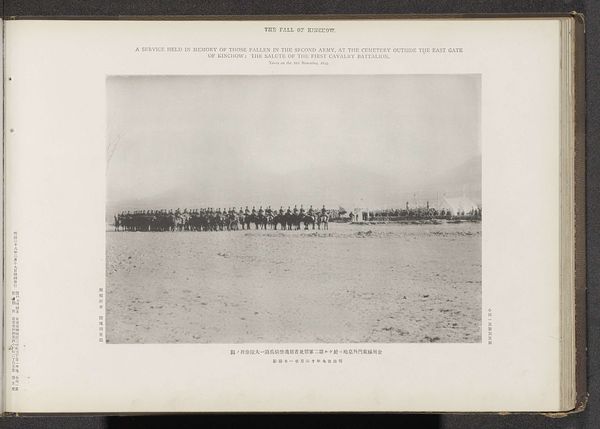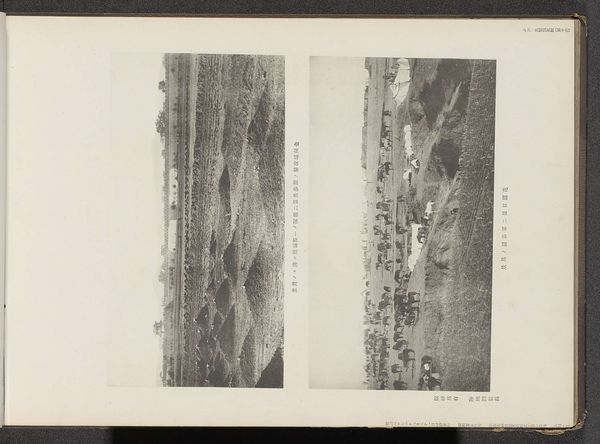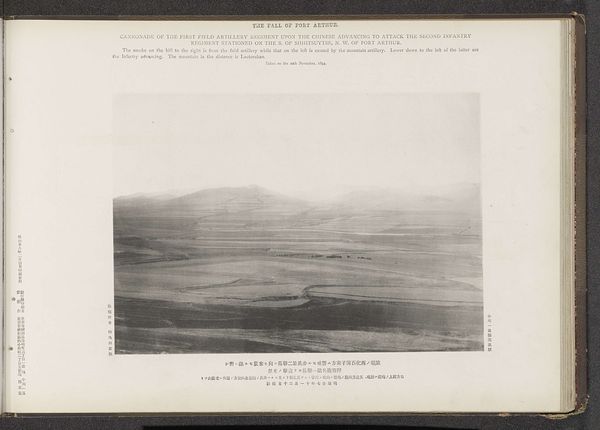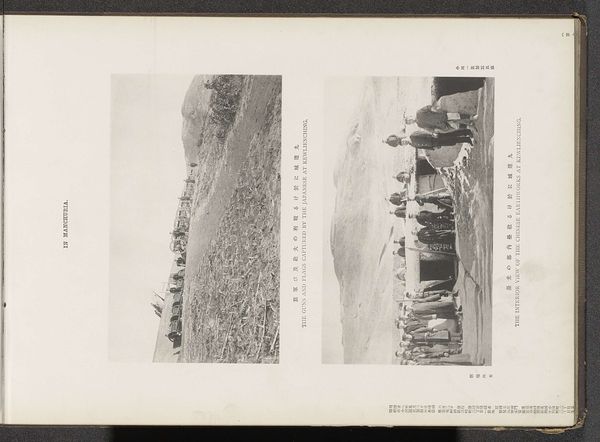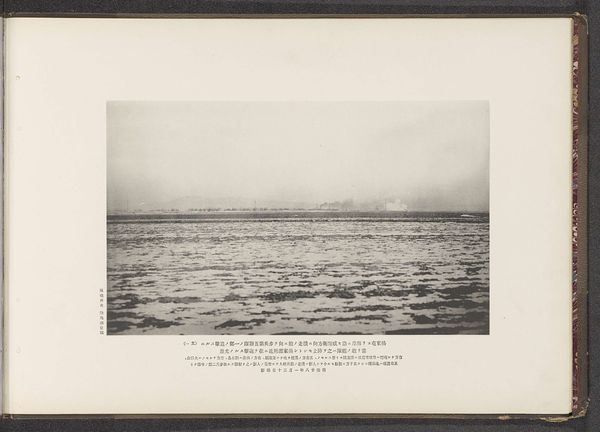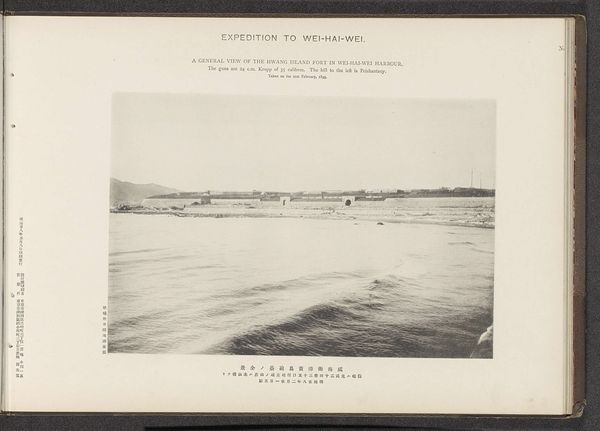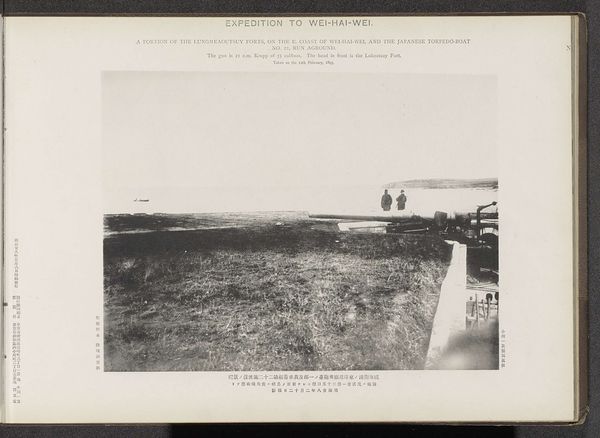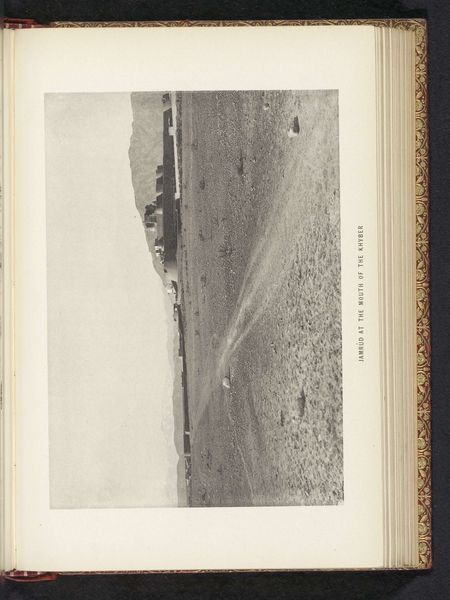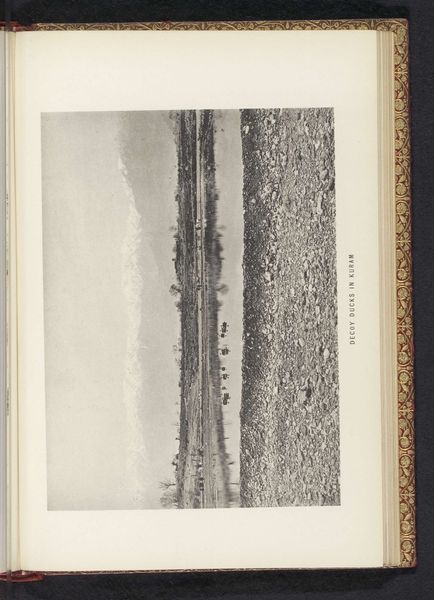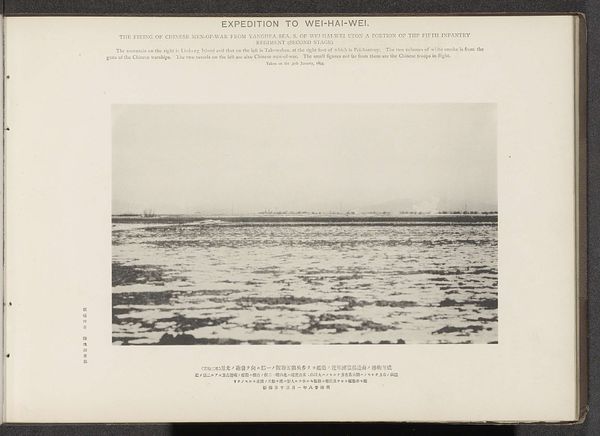
photogram, print, photography
#
photogram
# print
#
asian-art
#
landscape
#
photography
#
realism
Dimensions: height 211 mm, width 278 mm
Copyright: Rijks Museum: Open Domain
Editor: This is a fascinating photogram, potentially from 1894, titled "Vordering van het Japanse leger ten zuiden van Chinchow," which translates to "Advance of the Japanese Army South of Chinchow." It seems to show a military formation stretching into the distance. The sheer repetition of the figures creates a very stark, almost unsettling visual rhythm. What do you see in this piece? Curator: Indeed. Immediately, the formal arrangement of elements arrests my attention. Note the rigid, almost unwavering, horizontal line formed by the infantry. It divides the composition into distinct zones: the foreground terrain, seemingly tilled, versus the more nebulous background with hints of distant hills. This division imposes a clear structure on the image. How does the tonality impact your understanding? Editor: The grayscale is so uniform, it almost flattens the space. Everything seems equally weighted, lacking a strong focal point besides that endless line of soldiers. It’s both realistic and oddly abstract. Curator: Precisely. The even tonality removes conventional visual hierarchies. Your eye is compelled to traverse the entire surface, examining the relationship between foreground texture and the distant horizon. Consider the almost obsessive recording of detail in the formation; what purpose might this serve within the visual syntax of the photograph? Editor: It creates a sense of immense scale and order. Maybe it's about conveying military power through pure, visual organization. The soldiers are almost like pixels forming a larger image of an army. Curator: An astute observation. The photograph employs repetition as a core structural element, mirroring the systematic nature of military organization itself. The image functions as both a document and a study in visual ordering. Editor: So, analyzing its composition reveals a deeper meaning about control and the aesthetics of power? I didn't see that at first! Curator: Exactly. Focusing on the intrinsic formal elements – line, tone, and texture – unlocks an understanding of the artist’s intended communication, irrespective of external historical context. That is what strikes me in viewing the art; and hopefully something for others to ponder.
Comments
No comments
Be the first to comment and join the conversation on the ultimate creative platform.
